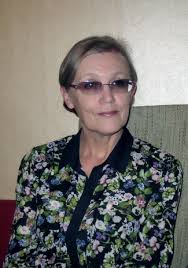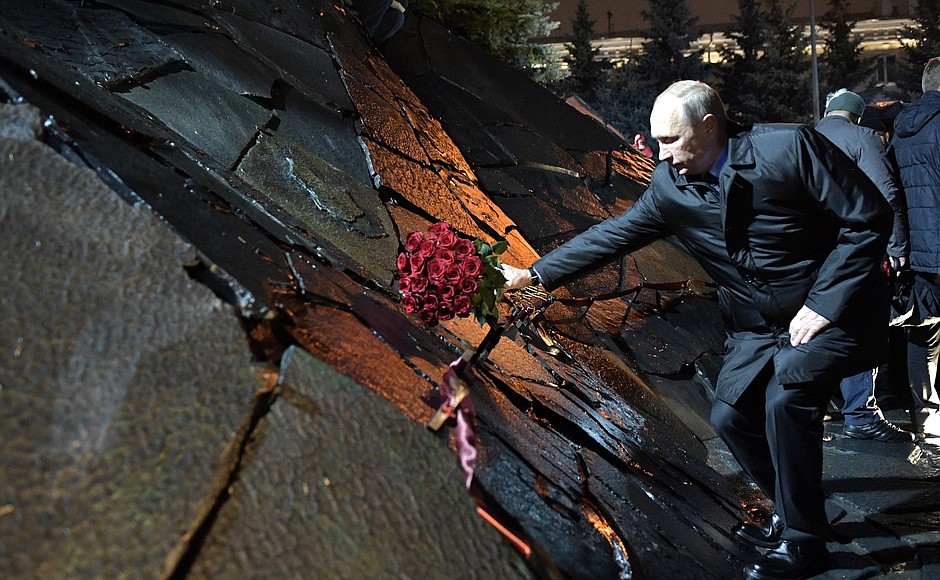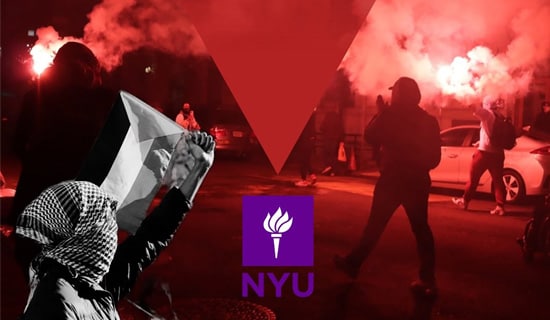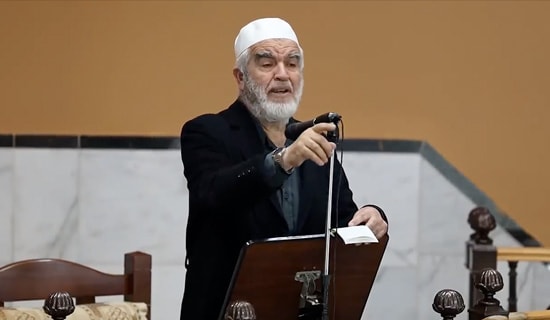The U.S.-based Russian historian Irina Pavlova commented in her blog on the opening of the Wall of Grief commemorating victims of Soviet-era political repression and terror.[1] The ceremony was held on October 30 2017, as part of the official Day Of Remembrance For Victims Of Political Repression.
However, according to Pavlova, the Wall of Grief does not acknowledge the crimes committed in the 1930s', but merely laments the "excesses" committed in the acts of repression. According to Pavlova, today's Russia has developed more advanced systems of repression. "It is not even necessary to persecute 'the fifth column' today. It is enough to instill in the society the idea that it exists. This is the advanced Stalinism of the information age, the Stalinism that is not afraid of freedom of speech, because it has become perfectly proficient in various methods of its devaluation," writes Pavlova.
Pavlova also accuses the top Russian leadership of hypocrisy. She writes: "On 20 December, the same top figures that today unveiled the Wall of Grief will mark the 100th anniversary of the [the KGB's forerunner, the] Cheka. There is even a commemorative medal ready: '100 Years to the VCheKa-KGB-FSB'." However, she notes that the official names for this organization during Stalinist times – OGPU-NKVD-MGB – are not included. "Which is also quite telling," adds Pavlova, hinting at a cover-up of Stalin's legacy.
The following are excerpts from Pavlova's post on her blog:[2]

Irina Pavlova (Rusfabula.com)

Russian President Vladimir Putin, at the opening of the Wall of Grief memorial. (Source: Kremlin.ru)
Pavlova: The Wall Of Grief Is Not A Sign Acknowledging The Crimes Committed In The 1930', But Merely A Sign Acknowledging The Excesses Of The Repression
"Well, it has happened. The Kremlin has kept its word. In accordance with Putin's order of 30 September 2015, 'The Wall of Grief' by sculptor Georgy Frangulyan was opened today on the intersection of Sakharov Avenue and the Garden Ring Road in Moscow. Not in Lubyanka Square, [the dreaded headquarters of the K.G.B.] where the Solovetsky Stone was laid.[3] But not in the courtyard of the Butyrka prison either,[4] as some suggested in 2008. It is in quite a conspicuous spot. Public officials and human rights advocates were present at the opening ceremony. President Putin made a speech.
"In a country with a Stalinist system of power, with new repressions and new political prisoners, with the Memorial society [a human rights center] declared a 'foreign agent', Russian authorities have sanctioned the installation of a NATIONAL monument to the victims of Stalin's (yes, Stalin's, even though it's not part of the official name!) political repressions, a monument that was first promised by [Communist Party First Secretary Nikita] Khruschev during the 22nd Communist Party Congress [October 1961].
"What do people think about this event? Here is the opinion of Elena Zhemkova, executive director of the Memorial International Society: 'For 30 years [ever since Memorial was established– I. P.], we have fought for this monument to be built. Now it will be unveiled by the top figure in the state and on behalf of the state. It means that the state is saying: terror is a crime. Mass murders of people are a crime'. And here is the assessment of the authors of the recent statement by the Congress of Russian Intelligentsia: 'It is a sign of acknowledgement of crimes committed in the 1930s'. As if everything appears to be in order. At the same time, it is not. It is not a sign of acknowledgement of crimes committed in the 1930s. It is a sign of acknowledgement of EXCESSES in the repressions of those times.
"Today, Stalin-type mass repressions are unnecessary, so excesses can be acknowledged and even condemned. Stalin condemned them, too. Today, Russian society is quite loyal to the top leadership without any mass repressions. In addition, it is under the watchful supervision of various security agencies, who only need to take repressive action against so-called extremists and terrorists from time to time to keep society in good shape.
"It is not even necessary to persecute 'the fifth column' today. It is enough to have society endorse the idea that it exists. This is the advanced Stalinism of the information age, the Stalinism that is not afraid of freedom of speech, because it has fully mastered the various methods of its devaluation. Today, the job of devaluing anti-Stalinism is entrusted to a new presidential candidate Ksenia Sobchak.[5] Not only did she make an appearance yesterday [October 29] during the annual Returning the Names event[6] [organized by the Memorial human rights group], but she also published a sharp anti-Stalin pamphlet on Instagram. And on 20 December, the same top figures that today unveiled the Wall of Grief will mark the 100th anniversary of the Cheka. There is even a commemorative medal ready: '100 Years to the VCheKa-KGB-FSB'. The names this organization had in Stalin's times – OGPU-NKVD-MGB – are not included. And this is also quite revealing.
"I opposed this kind of monument in 1998, 2008, and 2015... I oppose it now. In my opinion, this kind of NATIONAL monument should have become a symbol of the path the Russian society has travelled towards freedom, a symbol of its maturity and civic consciousness. But today it has become a symbol of new servitude, a symbol of a new version of pro-Stalin concept of Soviet history, a new edition of Stalinism. It is quite revealing that the Russian people donated only slightly over 45 million rubles for this monument. Most of its cost – 300 million – was allocated by the Moscow city government. I don't see indifference here, as many do; I see that ordinary Russian people, with all their obsequiousness, all their loyalty to the current supreme power, on some deep level feel, and a lot better than the 'progressive' intelligentsia, the falseness of what is happening. In late 1980s – early 1990s, in the short period of reawakening of social memory of the people, the situation was different. That was the moment when Memorial could have become not just an ordinary NGO but a real socio-political movement. Moreover, it could have grown into a real opposition to power; its real members would have been symbolically backed by millions of dead: those who were tortured in prisons and shot, those who died of starvation in camps and on the outside, in 'special settlements' and in exile, those who survived but forever kept the bitter memory of their history. Now it is clear it did not become all that.
"Today, Memorial representatives unveiled the monument together with the Kremlin representatives. That is, they accepted the situation that '…those people have forgiven me'. In my opinion, this line from the poem 'Amnesty' by Ivan Elagin (1918 – 1987), written many years ago, is morally impeccable in its reflection of the current situation with the unveiling of The Wall of Grief in Moscow. Here is the poem in full:
"He is still alive,
The man who shot my father
In the summer of '38 in Kiev.
SUPPORT OUR WORK

"Must be retired
And living in peace,
His habitual task abandoned.
"And if he is dead,
Another must still be alive.
The one who,
Just before shooting,
Tied my father's hands
Behind his back
With thick wire.
He must also be retired now.
"And if that one is dead,
Another must still be alive.
The one who tortured my father
During interrogation.
Must have gotten a really good
Retirement package.
"Maybe the guard is still alive,
The one who took my father to be shot.
"If I wanted,
I could go back to my homeland.[7]
I have heard
That all those people
Have forgiven me."
[1] See MEMRI Special Dispatch No. 7177, At The Opening Of Russia's Wall Of Grief, Patriarch Kirill Criticizes The Bolshevik Revolution On Its 100th Anniversary And Warns Against Fomenting New Revolutions, November 13, 2017.
[2] Ivpavlova.blogspot.co.il, October 30, 2017.
[3] The Solovetsky Stone is a monument to victims of the totalitarian communist regime in the Soviet Union. See https://um.mos.ru/en/houses/solovetsky-stone/
[4] The Butyrka prison is a prison in the North of Moscow, where processed thousands of victims of the Stalinist political repression were processed.
[5] See MEMRI Special Dispatch No. 7156, Reactions To Russian 'It Girl' Sobchak's Candidacy For 2018 Russian Presidential Elections, October 31, 2017.
See MEMRI Special Dispatch No. 7154, Memorable Political Tweets By Russian Presidential Hopeful Sobchak, October 30, 3017.
[6] In this event the names of those shot it Moscow during the Great Terror, whose number is estimated at 30,000, are recited.
[7] Elagin left the Soviet Union during World War II.




